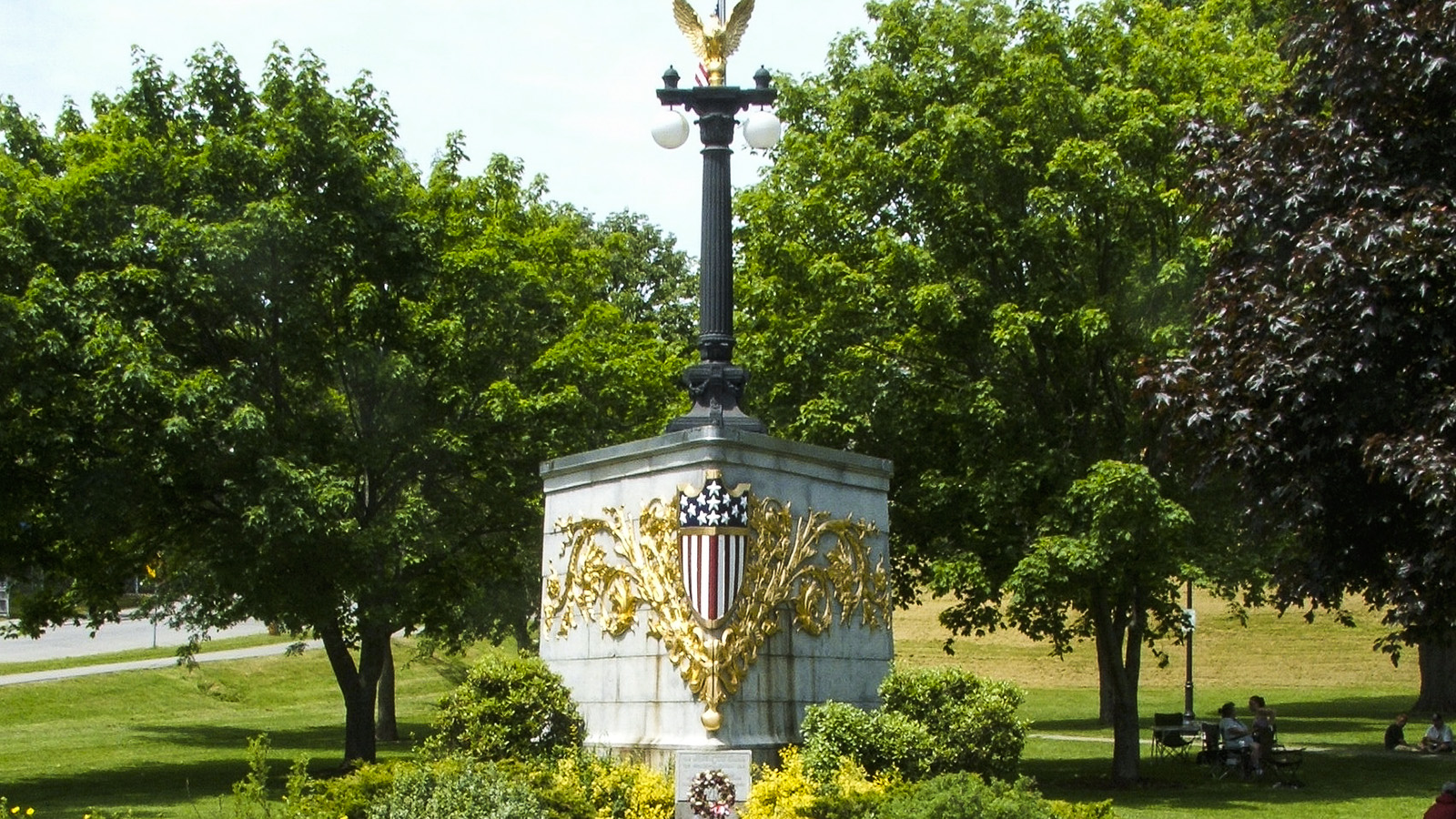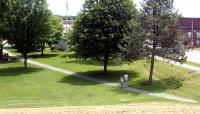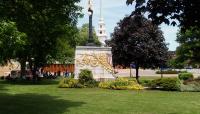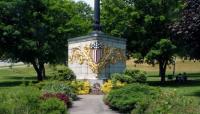In existence as early as 1834, the park was originally 1.5 acres in the center of a growing residential enclave. Little is known of the park’s original development, but by the early 1900s its composition included a central fountain, curvilinear paths and mature American elm trees.
In 1922 renowned sculptor and local resident Charles Tefft created Bangor’s Spanish-American war memorial, replicating in granite a massive ship’s bow on which to display the original shield and scroll recovered from the USS Maine, the sinking of which triggered the war. The monument replaced the original fountain in its highly visible central location.
Today the ¾-acre park lies between residential neighborhoods and commercial development on the Penobscot River. It is bisected by a diagonal concrete path, and consists of a large open lawn punctuated with shade trees. On its west side, the site’s steeply graded terrain is a popular hill for sledding. Approached along a short pathway lined with perennial plantings, Tefft’s Spanish-American War Memorial remains the park’s focal point and is one of Bangor’s most revered historic artifacts. In the early 2000s it was restored, with the shield’s stars and stripes repainted in traditional colors and the scroll garland depicting Maine wildflowers gilded in bright gold.







